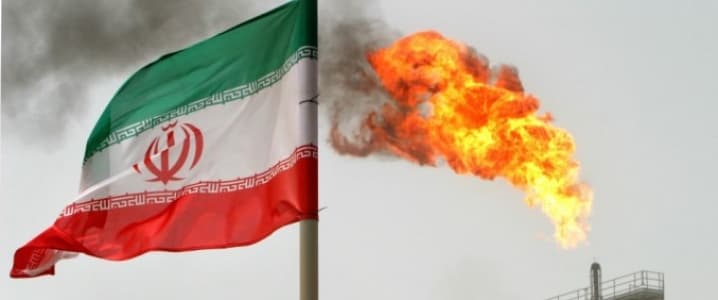A major part of the fall in oil prices last year was driven by concerns over the rising production levels of Iran. With nuclear sanctions in place, Iran had been forced to significantly curtail production due to lack of buyers. Once those sanctions disappeared due to the Iranian nuclear deal, the country was prepared to begin exporting crude en masse once more. That outcome caused investors to panic and led oil prices to fall considerably.
Analysts reassured the markets that it would take a couple of years for Iran to get production back to pre-sanctions levels. Almost all of this conventional wisdom has turned out to be incredibly wrong.
Iranian oil production has rebounded much faster than many analysts ever anticipated as the chart below shows. At this point, Iran is roughly back to pre-sanctions production levels. Score one against analysts who expected the process to take years.
(Clickto enlarge)
The result is that there is probably very little additional crude that is going to come online from Iran. The country is already pumping as fast as it can, and frankly its post-sanctions export program has been at best minimally successful. Again, this is a ding on conventional wisdom that suggests Iran’s production would have a significant impact on the market share of other major oil producers. This is probably a large part of what has driven Saudi commentary that the oil glut has disappeared.
Iran believes it can move from producing 3.5 million barrels per day (mb/d) in May to 4.8 mb/d by 2021, but to do that the country needs $70 billion in foreign capital to hit the target.
The reality is that capital is probably not going to come in the volume that Iran needs. China has its own problems to deal with, and Europe is still very wary of reengaging with Iran. The EIA thinks that the best case production scenario for Iran is 4.1 mb/d and that’s with the EIA assuming that Iran gets foreign capital and technology, and that sanctions do not remerge on Iran – a political possibility that cannot be ruled out. Related: Russia-German Pipeline May Break Europe’s Energy Union
The slowing production from Iran is already hitting OPEC’s crude production along with outages and issues in other OPEC nations. OPEC production declined marginally in May and may have done so again for June.
Fundamentally though, Iran has other problems when it comes to production. Purchases by Europe as still far below where they were on a pre-sanctions basis. Italy, once Iran’s best customer in Europe, took more than 5 months to accept its first Iranian oil tanker shipment, while purchases by Spain and Greece also remain far below pre-sanction levels.
Instead, Iranian crude is mostly being sold to Asian countries – China, India, Japan, and South Korea. The problem for Iran is that those customers are generally going to be more frugal and probably drive a harder bargain than corporate buyers in Europe. While China and India do have private oil refiners, the reality is that state intervention in both economies means that Iran is really negotiating oil prices with another country. And those countries are perfectly happy to buy crude elsewhere if the desperate Iranians aren’t willing to surrender on price.
Overall the takeaway for oil investors is that the Iranian threat is probably overdone. There is no indication that Iran has the capacity to keep ramping up production and with oil prices as low as they are, the country would probably have to give ground it can’t afford to cede on price in order to take market share away from existing incumbents.
By Michael McDonald of Oilprice.com
More Top Reads From Oilprice.com:
- OPEC’s Pain Is Only Getting Worse As Revenues Continue To Fall
- Jordan Investing Heavily In Renewables
- Nuclear Energy May Be A Key Tool In The Climate Change Fight




















They likely are running out of stockpiles now and their production will fall back closer to what they're actually taking out of the ground on a daily basis.
Respectfully, I don't agree with these comments.
Everyone, every nation has its problems, even China. But one of their problems is what to do with all their foreign currencies. They like to invest in resources. They had supplied money for oil production in Africa and all Americas (north and south). They made deals with criminal african dictators, they will deal with Iran.